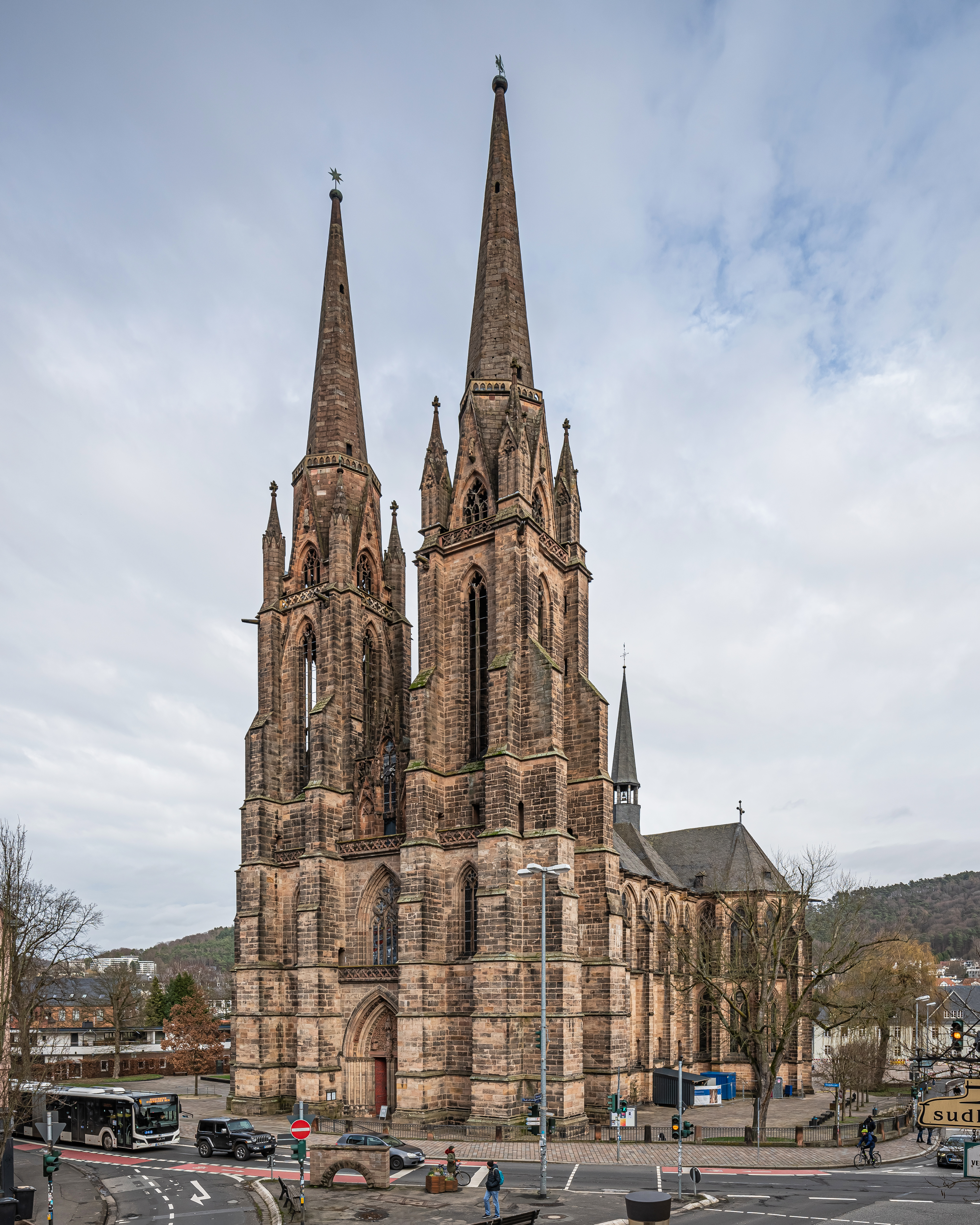|
Patronage In Astronomy
Frontispiece of the Rudolphine Tables Patronage in astronomy is an approach which one can use to examine the history of astronomy from a cultural standpoint. Rather than simply focusing on the findings and discoveries of individual astronomers, this approach emphasizes the importance of patronage in shaping the field of astronomy. Importance to the history of science An often overlooked dimension in the history of science, the patronage system and the realities that existed within such a system played an important role in the lives of many of science's icons and heroes. The history of astronomy in particular is filled with examples demonstrating the relationship between patron and client, including that of Galileo Galilei and his ties to the Medici family. Many historians have begun to examine the importance of examining scientific history through this relatively forgotten lens. Dr. Robert Smith, in an article examining patronage in the early history of NASA, begins with the ... [...More Info...] [...Related Items...] OR: [Wikipedia] [Google] [Baidu] |
Nicholas Jardine
Nicholas Jardine FBA (born 4 September 1943) is a British mathematician, philosopher of science and its history, historian of astronomy and natural history, and amateur mycologist. He is Emeritus Professor at the Department of History and Philosophy of Science (HPS) at the University of Cambridge. Career Jardine was educated at Monkton Combe School in Somerset and read natural sciences at King's College, Cambridge. He then worked as a King's College and Royal Society Research Fellow on the automation of classification and information retrieval and its applications to biological taxonomy and diagnosis. In 1975 he moved to Darwin College, Cambridge and to the Department of History and Philosophy of Science. Since then he has developed a question-based pragmatic philosophy of science (inspired by the work of Ian Hacking), as well as studying the history of early-modern astronomy and natural history, and reflecting on the methodology of the history of the sciences. From 1987–201 ... [...More Info...] [...Related Items...] OR: [Wikipedia] [Google] [Baidu] |
Tychonian System
The Tychonic system (or Tychonian system) is a model of the Universe published by Tycho Brahe in the late 16th century, which combines what he saw as the mathematical benefits of the Copernican system with the philosophical and "physical" benefits of the Ptolemaic system. The model may have been inspired by Valentin Naboth and Paul Wittich, a Silesian mathematician and astronomer. A similar model was implicit in the calculations more than a century earlier by Nilakantha Somayaji of the Kerala school of astronomy and mathematics.Joseph, George G. (2000), ''The Crest of the Peacock: Non-European Roots of Mathematics'', p. 408, Princeton University Press, It is conceptually a geocentric model, or more precisely geoheliocentric: the Earth is at the centre of the universe, the Sun and Moon and the stars revolve around the Earth, and the other five planets revolve around the Sun. At the same time, the motions of the planets are mathematically equivalent to the motions in Copernic ... [...More Info...] [...Related Items...] OR: [Wikipedia] [Google] [Baidu] |
Globe
A globe is a spherical model of Earth, of some other celestial body, or of the celestial sphere. Globes serve purposes similar to maps, but unlike maps, they do not distort the surface that they portray except to scale it down. A model globe of Earth is called a terrestrial globe. A model globe of the celestial sphere is called a ''celestial globe''. A globe shows details of its subject. A terrestrial globe shows landmasses and water bodies. It might show nations and major cities and the network of latitude and longitude lines. Some have raised relief to show mountains and other large landforms. A celestial globe shows notable stars, and may also show positions of other prominent astronomical objects. Typically, it will also divide the celestial sphere into constellations. The word ''globe'' comes from the Latin word ''globus'', meaning "sphere". Globes have a long history. The first known mention of a globe is from Strabo, describing the Globe of Crates from about 150&nb ... [...More Info...] [...Related Items...] OR: [Wikipedia] [Google] [Baidu] |
Jost Bürgi
Jost Bürgi (also ''Joost, Jobst''; Latinisation of names, Latinized surname ''Burgius'' or ''Byrgius''; 28 February 1552 – 31 January 1632), active primarily at the courts in Kassel and Prague, was a Swiss clockmaker, a maker of astronomical instruments and a mathematician. Life Bürgi was born in 1552 Lichtensteig, Toggenburg, at the time a subject territory of the Abbey of St. Gall (now part of the canton of St. Gallen, Switzerland). Not much is known about his life or education before his employment as astronomer and clockmaker at the court of William IV in Kassel in 1579; it has been theorized that he acquired his mathematical knowledge at Strasbourg, among others from Swiss mathematician Conrad Dasypodius, but there are no facts to support this. Although an autodidact, he was already during his lifetime considered as one of the most excellent mechanical engineers of his generation. His employer, William IV, Landgrave of Hesse-Kassel, in a letter to Tycho Brahe praise ... [...More Info...] [...Related Items...] OR: [Wikipedia] [Google] [Baidu] |
Conversation Piece
A conversation piece refers to a group portrait in a domestic or landscape setting depicting persons chatting or otherwise socializing with each other.Conversatiestuk at the Netherlands Institute for Art History The persons depicted may be members of a family as well as friends, members of a society or hunt, or some other grouping who are shown sharing common activities such as hunts, meals, or musical parties.British Conversation Pieces and Portraits of the 1700s at The National Gallery. Retrieved 20 March 2022. It was an especially popular genre in 18th-century England, beginning from the 1720 ... [...More Info...] [...Related Items...] OR: [Wikipedia] [Google] [Baidu] |
Cosmology
Cosmology () is a branch of physics and metaphysics dealing with the nature of the universe. The term ''cosmology'' was first used in English in 1656 in Thomas Blount (lexicographer), Thomas Blount's ''Glossographia'', and in 1731 taken up in Latin by German philosophy, German philosopher Christian Wolff (philosopher), Christian Wolff, in ''Cosmologia Generalis''. Religious cosmology, Religious or mythological cosmology is a body of beliefs based on Mythology, mythological, Religion, religious, and Esotericism, esoteric literature and traditions of Cosmogony, creation myths and eschatology. In the science of astronomy it is concerned with the study of the chronology of the universe. Physical cosmology is the study of the observable universe's origin, its large-scale structures and dynamics, and the ultimate fate of the universe, including the laws of science that govern these areas. It is investigated by scientists, such as astronomers and physicists, as well as Philosophy, ph ... [...More Info...] [...Related Items...] OR: [Wikipedia] [Google] [Baidu] |
Courtier
A courtier () is a person who attends the royal court of a monarch or other royalty. The earliest historical examples of courtiers were part of the retinues of rulers. Historically the court was the centre of government as well as the official residence of the monarch, and the social and political life were often completely mixed together. Background Monarchs very often expected the more important nobles to spend much of the year in attendance on them at court. Not all courtiers were noble, as they included clergy, soldiers, clerks, secretaries, agents and middlemen with business at court. All those who held a court appointment could be called courtiers but not all courtiers held positions at court. Those personal favourites without business around the monarch, sometimes called the camarilla, were also considered courtiers. As social divisions became more rigid, a divide, barely present in Antiquity or the Middle Ages, opened between menial servants and other classes at court, ... [...More Info...] [...Related Items...] OR: [Wikipedia] [Google] [Baidu] |
Neapolitan Republic (Napoleonic)
The Parthenopean Republic ( it, Repubblica Partenopea, french: République Parthénopéenne) or Neapolitan Republic (''Repubblica Napoletana'') was a short-lived, semi-autonomous republic located within the Kingdom of Naples and supported by the French First Republic. The republic emerged during the French Revolutionary Wars after King Ferdinand IV fled before advancing French troops. The republic existed from 21 January to 13 June 1799, collapsing when Ferdinand returned to restore monarchial authority and forcibly subdued republican activities. Etymology The Parthenopean Republic is named after Parthenope, a Greek settlement now part of the city of Naples. Origins of the Republic On the outbreak of the French Revolution King Ferdinand IV of Naples and Queen Maria Carolina did not at first actively oppose reform; but after the fall of the French monarchy they became violently opposed to it, and in 1793 joined the first coalition against France, instituting severe persecution ... [...More Info...] [...Related Items...] OR: [Wikipedia] [Google] [Baidu] |
Marburg
Marburg ( or ) is a university town in the German federal state (''Bundesland'') of Hesse, capital of the Marburg-Biedenkopf district (''Landkreis''). The town area spreads along the valley of the river Lahn and has a population of approximately 76,000. Having been awarded town privileges in 1222, Marburg served as capital of the landgraviate of Hessen-Marburg during periods of the fifteenth to seventeenth centuries. The University of Marburg was founded in 1527 and dominates the public life in the town to this day. Marburg is a historic centre of the pharmaceutical industry in Germany, and there is a plant in the town (by BioNTech) to produce vaccines to tackle Covid-19. History Founding and early history Like many settlements, Marburg developed at the crossroads of two important early medieval highways: the trade route linking Cologne and Prague and the trade route from the North Sea to the Alps and on to Italy, the former crossing the river Lahn here. A first mention o ... [...More Info...] [...Related Items...] OR: [Wikipedia] [Google] [Baidu] |
Papal Court
The papal household or pontifical household (usually not capitalized in the media and other nonofficial use, ), called until 1968 the Papal Court (''Aula Pontificia''), consists of dignitaries who assist the pope in carrying out particular ceremonies of either a religious or a civil character. It is organised into two bodies: the Papal Chapel (''Cappella Pontificia''), which assists the pope in his functions as the spiritual head of the church, especially in religious ceremonies; and the Papal Family or Household (''Familia Pontificia''), which assists him as head of a juridical body with civil functions. Modern organisation Papal Chapel The Papal Chapel consists of ecclesiastics who participate in religious ceremonies wearing their liturgical vestments or the dress proper to their rank and office.''Annuario Pontificio'' 2013 (Libreria Editrice Vaticana 2013 ), p. 1850 Historically, chanted divine service was held daily in the papal palace, with the Pope in person celebrating or ... [...More Info...] [...Related Items...] OR: [Wikipedia] [Google] [Baidu] |
Frederick II Of Denmark
Frederick II (1 July 1534 – 4 April 1588) was King of Denmark and Norway and Duke of Schleswig and Holstein from 1559 until his death. A member of the House of Oldenburg, Frederick began his personal rule of Denmark-Norway at the age of 24. He inherited a capable and strong kingdom, formed in large by his father after the civil war known as the Count's Feud, after which Denmark saw a period of economic recovery and of a great increase in the centralised authority of the Crown. Frederick was, especially in his youth and unlike his father, belligerent and adversarial, aroused by honor and national pride, and so he began his reign auspiciously with a campaign under the aged Johan Rantzau, which reconquered Dithmarschen. However, after miscalculating the cost of the Northern Seven Years' War, he pursued a more prudent foreign policy. The remainder of Frederick II's reign was a period of tranquillity, in which king and nobles prospered. Frederick spent more time hunting and f ... [...More Info...] [...Related Items...] OR: [Wikipedia] [Google] [Baidu] |








